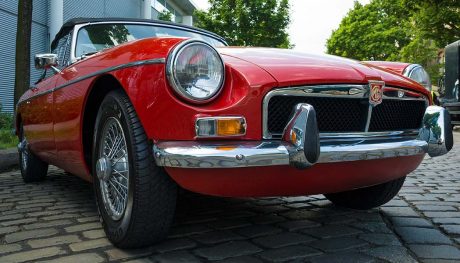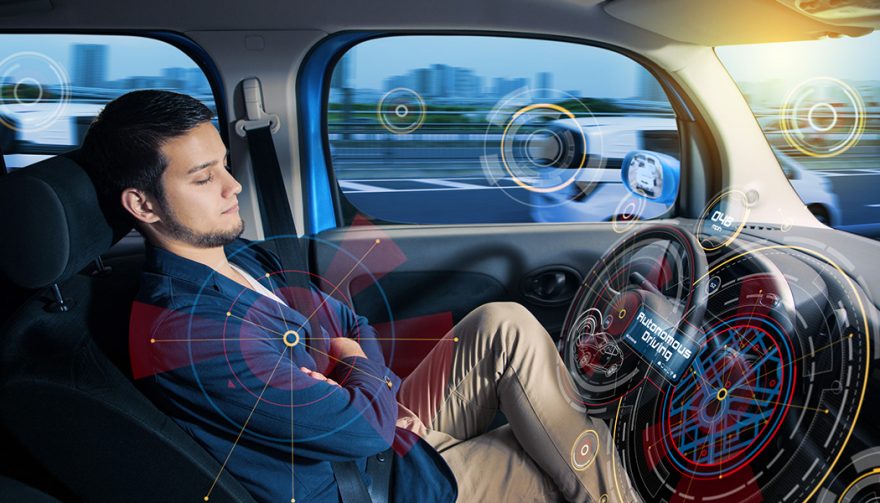
As traffics gets worse, so does driving. Take a load off, we're looking at cars that drive themselves and how that can make your commute easier
5 of The Best Cars That Can Drive Themselves… Sort of
There is no shortage of hype about driverless cars. And the day that cars (trucks, semis, ambulances, forklifts, etc.) truly drive themselves appears to be an inevitable part of our future. But it will be several years before we climb into the family pod and go over the river and through the woods to Grandma’s house without someone at the wheel. Actually, there probably won’t be a wheel. Driverless cars or cars that drive themselves are autonomous vehicles and auto manufacturers have a ways to go before achieving that.
Many brands today have systems that do a good job of detecting motion, measuring distances and controlling braking and acceleration. Some will parallel park your car for you. And there are more “advanced” systems that we’ll discuss here later, that have steering capabilities, but there isn’t any vehicle available today that meets the Society of Automotive Engineers (SAE) definition of a level 5 autonomous vehicle. That’s right, there are no cars that drive themselves.
How Self is Self Driving?
This might be a good place to provide the short version of the SAE definitions of automation and autonomous.
- Level 1 (hands on). The driver controls steering and provides driving decisions. Systems maintain a set speed (cruise control) or control speed, braking, and distance between vehicles (adaptive cruise control). Lane-keeping assistance (LKA) also falls in this category.
- Level 2 (hands off) The system takes full control over acceleration, braking, and steering. However, the driver must be alert and ready to intervene if the system fails. The term “hands off” is not to be taken literally (except in the Cadillac CT-6) and typically requires the driver to signal their engagement by gripping or pushing a button on the wheel.
- Level 3 (eyes off). The car controls all aspects of driving allowing the driver to engage in other activities (texting, watch a movie, etc.). However, the driver must respond to a failure within a specified amount of time.
- Level 4 (mind off). This is the ride that will let you go to sleep if you want to. SAE envisions this system to only be active in special, low speed, situations like traffic jams. If the system fails, it pulls to the side of the road and parks.
- Level 5 (steering wheel optional). This is a truly autonomous vehicle. It requires no input from a human other than the address of the destination. A robot Taxi fits into this category.
How Do These Self-Driving Systems Work?
The short answer is sensors and software. Sensors, which are comparatively inexpensive include cameras, infrared detectors, radar, GPS Inertial Measurement Units (IMU) which can pindown the precise location of a moving vehicle to ¼ inch, and LIDAR or Light Detection and Ranging sensors.
The real secret sauce for cars that drive themselves is the software. Imagine the computing power required to manage these massive data streams, collate the information, manage it, secure it, and then analyze it using an algorithm designed to predict the correct action. And then the whole system can fail, at least temporarily, by a concrete road that has been bleached by the sun and had repairs made with black tar.
Lane markings are key to keeping the vehicle on the road. If the lanes can’t be “read” the system doesn’t know where it is on the road.
Top 5 “Self-Driving” Cars Available Today
As mentioned, there are plenty of brands that have automated driver assistance features, but we have limited the list to rides that market their system as semi-autonomous.
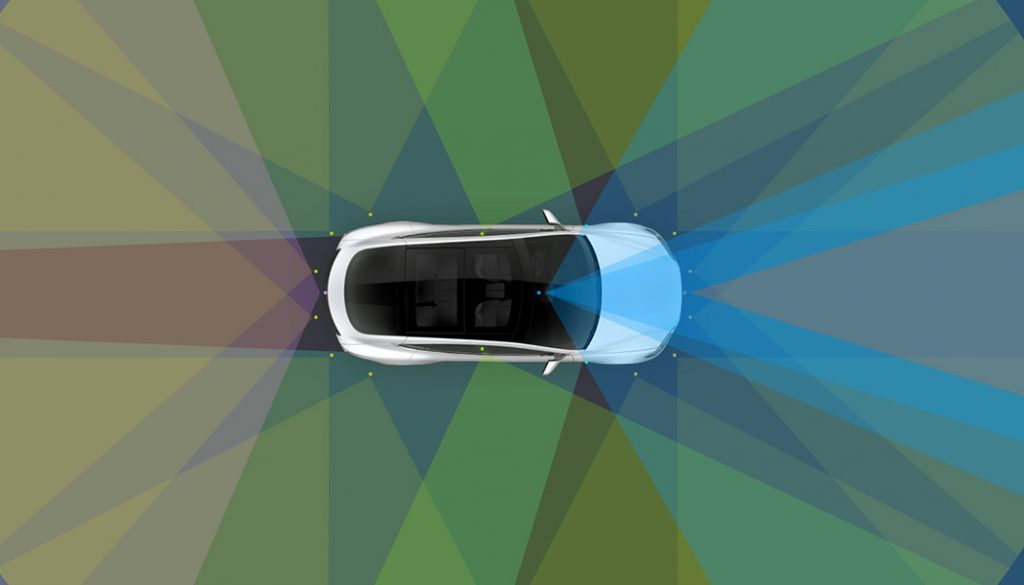
Tesla Autopilot
When the YouTube video of an L.A. commuter apparently snoozing behind the wheel of his Tesla Model S cruising down I-10 hit the internet, so did America’s interest in self-driving cars. Tesla was quick to point out that drivers need to be alert and ready to intercede should their Autopilot system fail. That said, four years later Tesla is selling a “full self driving package.”
The new package (which is sold as an upgrade to AutoPilot) can keep a Tesla in the center of a lane, automatically change lanes, and even tackle on and off-ramps on the highway. However, Tesla’s idea of self driving requires that the driver’s hands be on the wheel, ready to intercede, while the system drives the car.
Regular AutoPilot (AP2) has some pretty cool features but also, like all semi-autonomous software, its challenges. AP2 provides Traffic Aware Cruise Control (TACC) which is a juiced-up adaptive cruise control, Autosteer which keeps you in the center of your lane and can automatically execute lane changes, lane assist, collision avoidance, and speed assist. It’s great on limited-access roads, not so hot on surface streets. Because it can’t read stoplights. Also, if the system detects that the lane has widened, it will attempt to find the center. Unfortunately, right turn lanes and off-ramps are considered widening of a lane and the system steers right.
Tesla’s ultimate goal is to build cars that drive themselves (Level 5) and get into the robotic taxi biz. Currently, they have a nice Level 2 system in Autopilot.
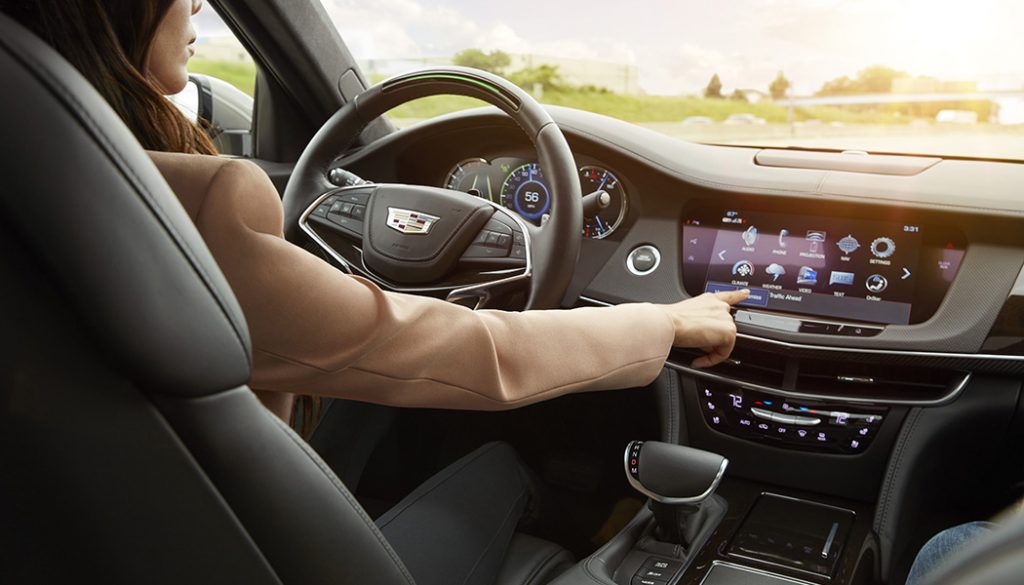
Cadillac Super Cruise
The system that is most frequently compared to Tesla’s Autopilot is Cadillac’s Super Cruise. Available only on the CT-6, Super Cruise is a truly hands-free system. Albeit only on select limited access highways. Super Cruise has the typical sensors eyeballing the area around the vehicle and determining range, and it requires that you remain alert although there is no need to have your hands on the wheel like Autopilot and most other systems.
What it does require, is your eyes be focused on the road. The one sensor that nobody else has, is a camera mounted just above the steering column that tracks your eyes. So long as your eyes (with or without sunglasses) are aimed ahead and not down or to the side, Super Cruise does its thing. Ignore the warnings that go off if your eyes wander (or close) long enough and the system will slow the car to a stop, turn on the flashers, and call OnStar to report a medical emergency.
Cadillac has loaded 130,000 miles of LIDAR maps of limited access highways into its system. You have to be driving on a mapped road for the system to work. But it works pretty well. Lane keeping, curves, speed control, braking, are all smooth and the system is quick to build driver confidence. It won’t automatically change lanes like AutoPilot, you have to signal to activate lane change. It also won’t do off ramps. But in terms of relaxed driving, the Super Cruise has the other systems beat hands down.
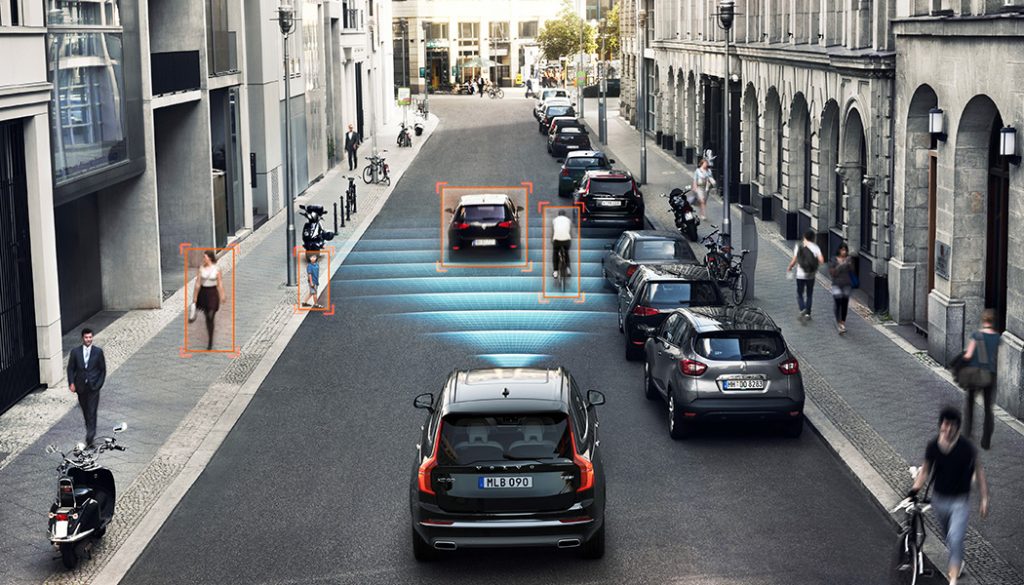
Volvo Pilot Assist
The Pilot Assist principally is a merger of lane tracking and adaptive cruise control. Unlike Tesla or Cadillac, the Volvo system requires almost constant input from the driver meaning frequently nudging the wheel. In fact, listed under our Stupid Tricks by Stupid People collection are the multiple hacks to avoid the need to touch the wheel in a Volvo equipped with Pilot Assist. Particularly the ones that involve duck taping a bottle of water to the steering wheel.
Why does Volvo require the hands-on approach? We think it’s because Pilot Assist has a difficult time determining where the center of the lane is. As a result, it has an unnerving habit of weaving between the outboard lane marking to the onboard marking.
It does perform it’s adaptive cruise control function well. It keeps an appropriate distance between the Volvo and the vehicle ahead and does well in gridlock traffic. However, if the car comes to a complete stop in heavy traffic, it occasionally needs a tap on the accelerator to get it going again.
One last comment on the Pilot Assist. Consumer Reports ranked Pilot Assist last among the four systems reviewed here. Their principal concern was Volvo’s decision to simply disengage the system if the driver attention alarms went ignored. Rather than bringing the car to a controlled stop and turning on flashers, the system just disengages requiring immediate driver intervention. That could mean that a car going 70 mph is now being “driven” by someone who just had a heart attack or stroke.
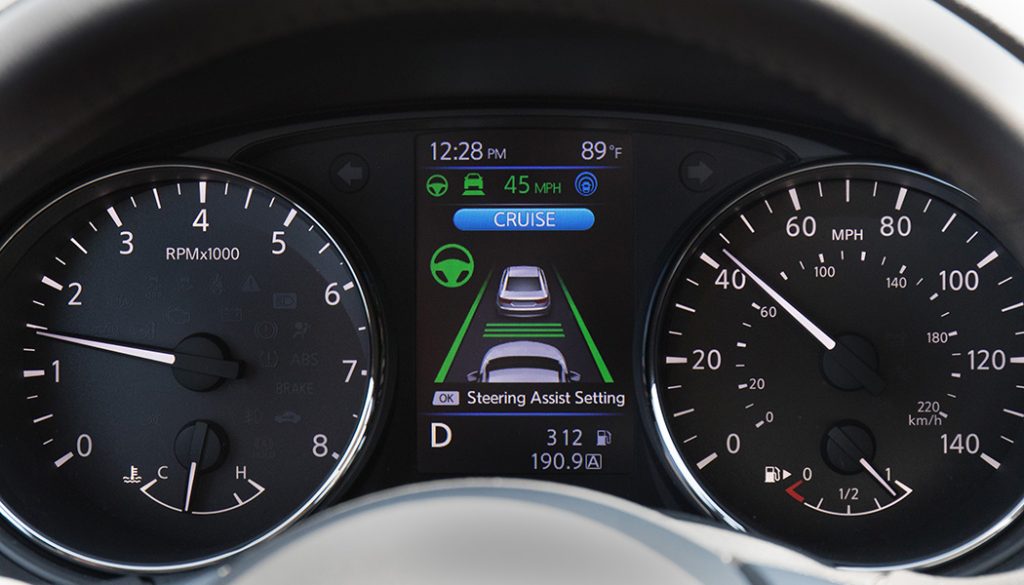
Nissan ProPILOT Assist
Kudos to Nissan for truth in advertising. They’ve made it plain that ProPILOT Assist is not a self-driving system but rather a hands-on driver-assist feature. What it really does is add steering assist to their standard Intelligent Cruise Control. It does an excellent job of keeping you in the center of a lane, controlling speed (you set the max), will maintain distances between vehicles (you pick 1, 2, or 3 car lengths), and automatically brakes and accelerates. Like other systems, it excels in bumper to bumper traffic on freeways.
The system does require hands-on at all times. If you take your hands off and keep them off, you will receive multiple visual and audio warnings, the system will pump the brakes a couple of times, and then it will slow the car to a stop, turn on the flashers, and even set the parking brake. Like some other systems, it can steer around curves but cannot automatically change lanes. It can’t recognize stop signs or stoplights, and it can’t recognize things (tire treads, roadkill, potholes, animals) in the highway.
If your windshield wipers are on (other than intermittent) it can’t see the lane markers and will disengage. If snow has covered the radar sensors in the nose, the system will disengage. It is, as they claim, a driver assist system not a safety or self-driving system.
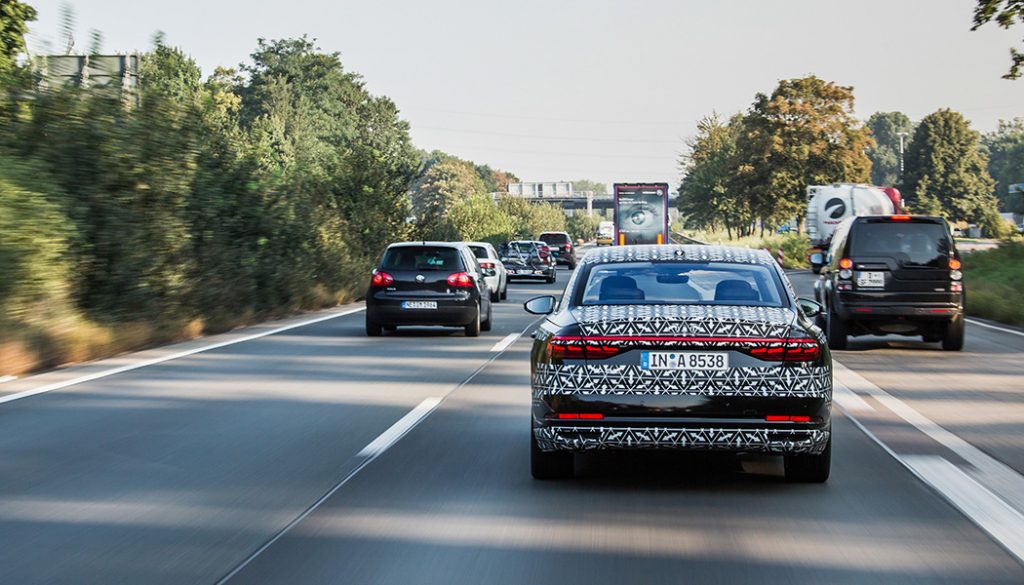
Audi Traffic Jam
Traffic Jam is actually a piece of Audi’s Drive Assist Package which is full of nifty automated maneuvering features like rim protection and a variety of automated ways to get in and out of tight parking stalls. However, what makes Traffic Jam different is Audi’s claim that it is the first Level 3 system to be made available commercially. And, as best we can tell, Traffic Jam does meet the definition of a Level 3.
The Traffic Jam is designed to operate in one specific situation. As its name suggests, the system will only kick in when you encounter bumper to bumper, stop and go traffic on a freeway. Even then, certain conditions need to be met.
The road you are on has to be a divided highway meaning oncoming traffic is separated by a median or other barrier. The top speed of the traffic jam cannot exceed 37 mph (60 kph). There has to be traffic on both sides of your car, or on one side if you are next to the median or the right edge of the highway. When those conditions are met, you can activate Traffic Jam. The system will “drive” the car controlling speed, braking, and steering (within your lane) without any physical input from you. About the only thing you can’t do when Traffic Jam is on is take a nap.
You have to be available to intervene should the system fail or one of the conditions (speed?) disappears.
So there you have it. There are no true cars that drive themselves, and there probably won’t be any for a number of years. However, if you travel lightly trafficked freeways and roads with limited access. Or if you routinely run into gridlock on your interstate commute, existing systems can take some of the load off. It’s not all the way there, but we’re getting closer to cars that drive themselves.





